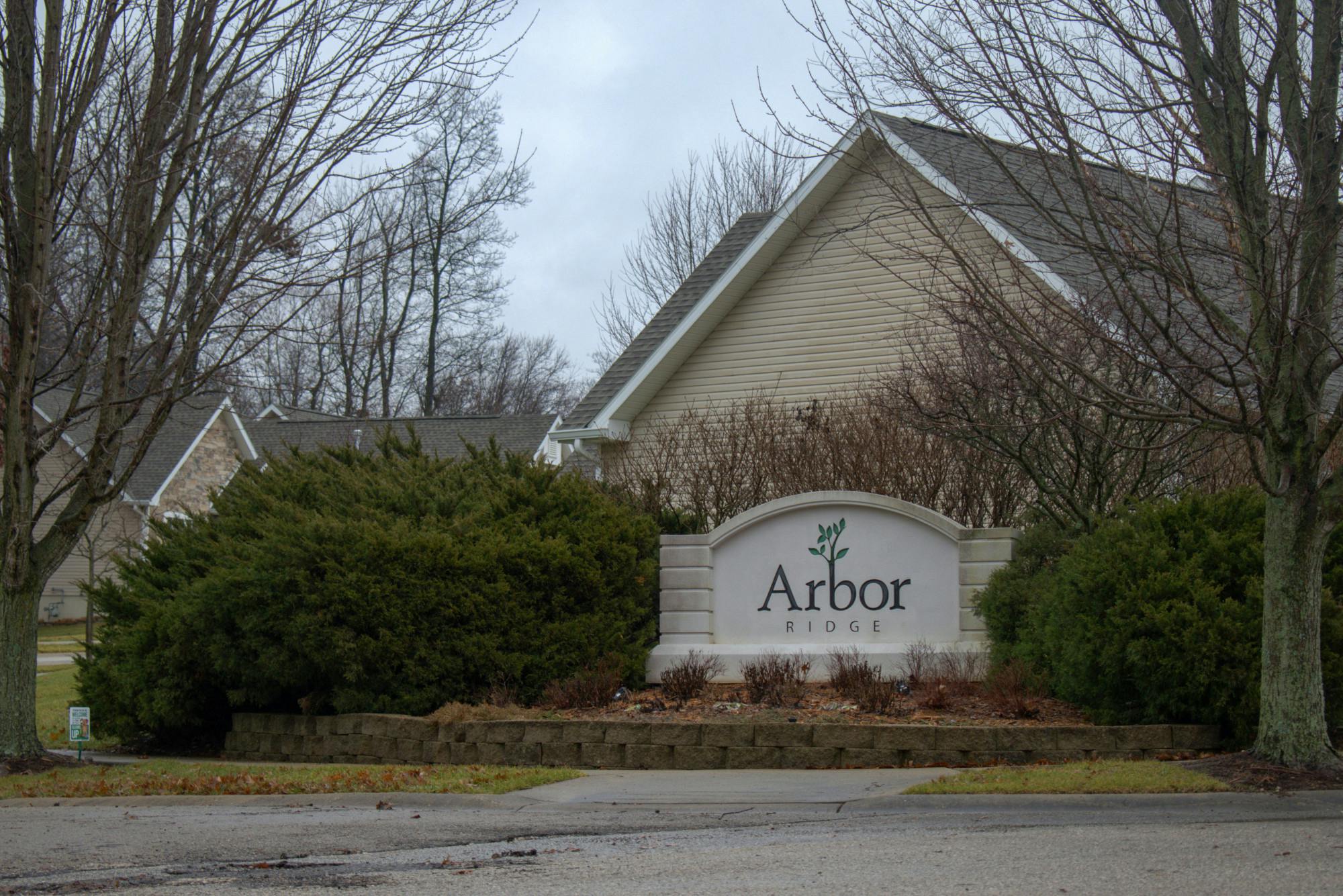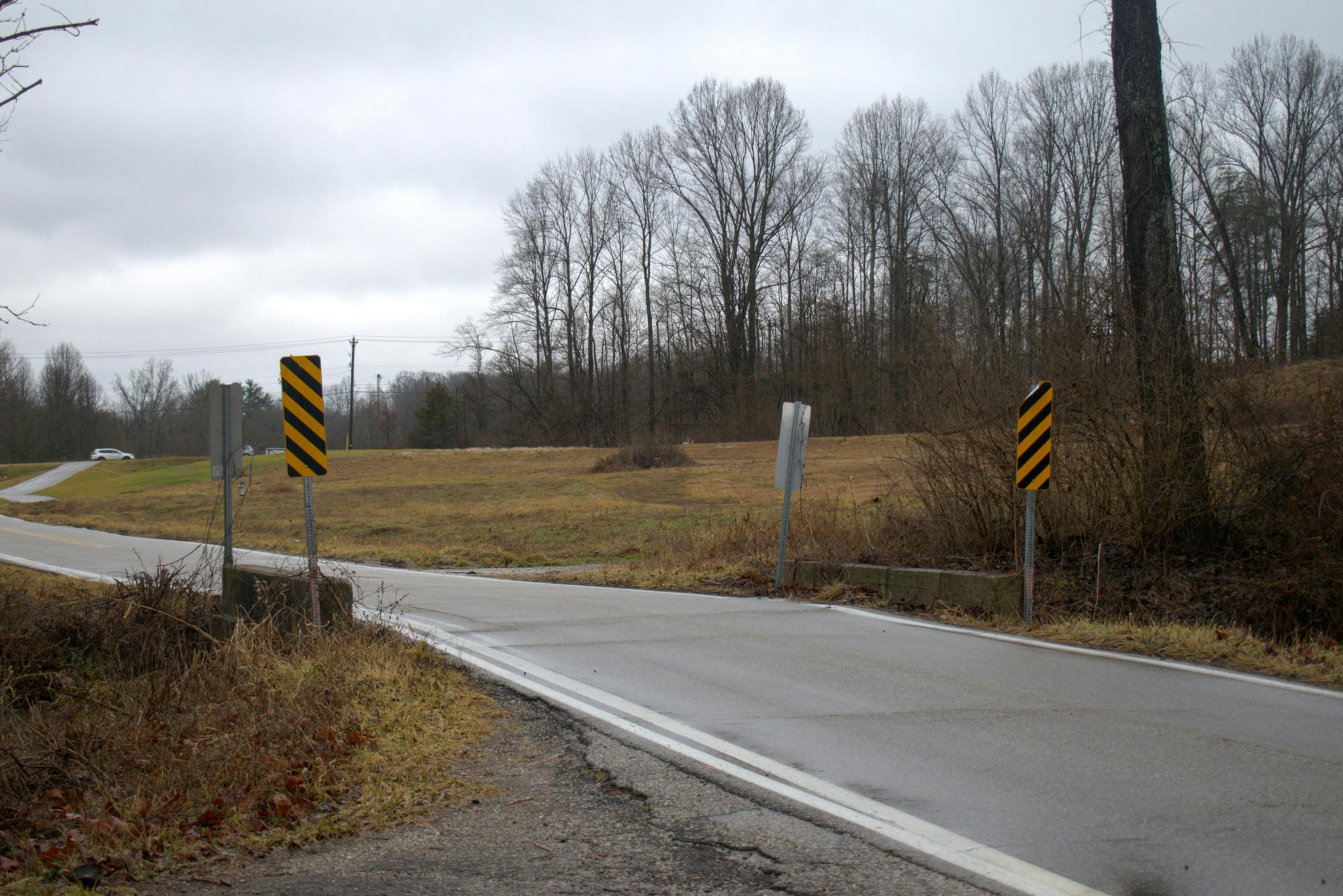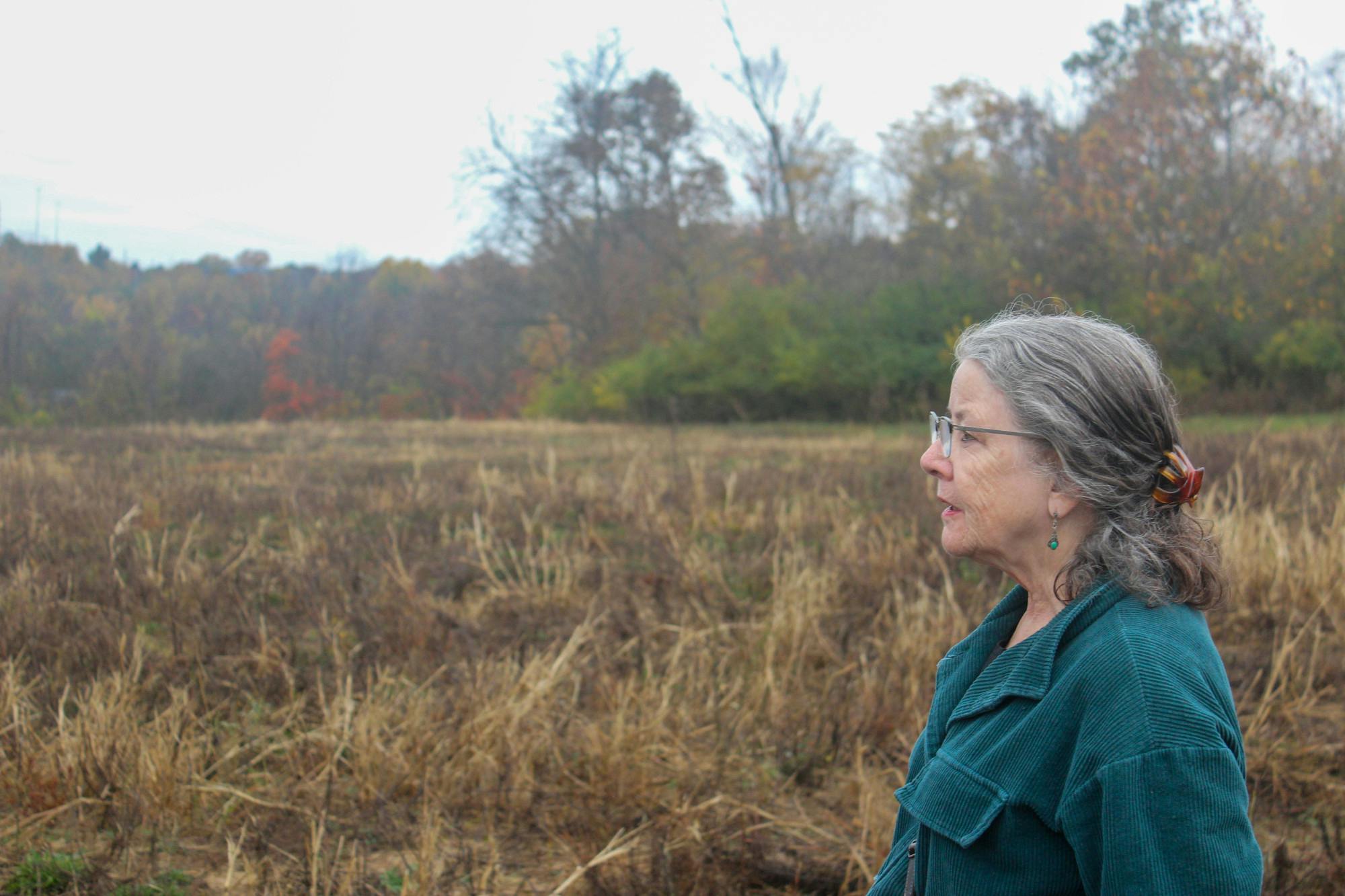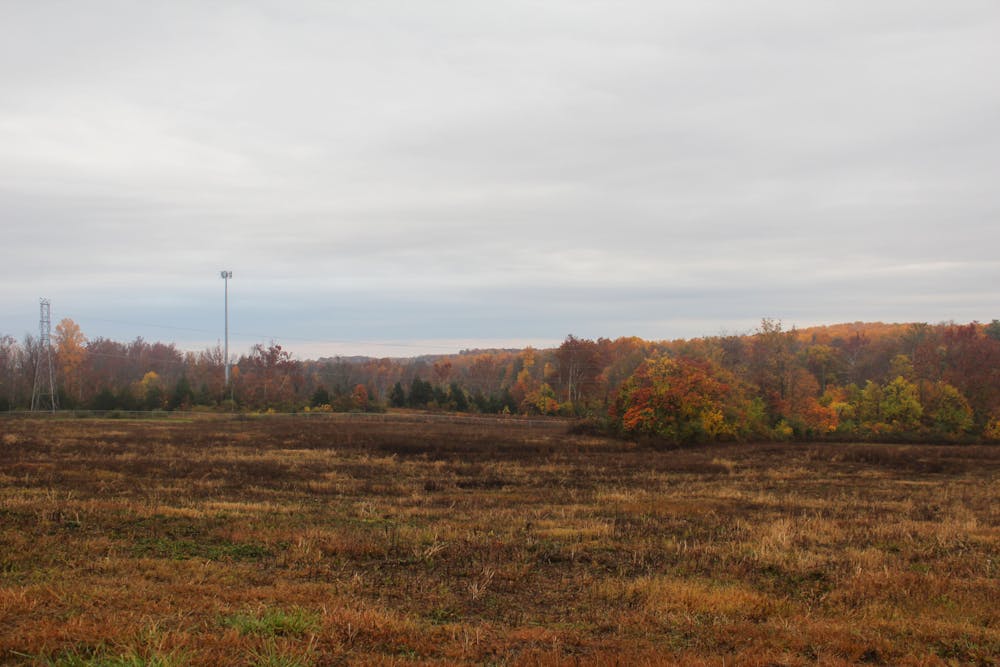The Bloomington Plan Commission is considering a petition to rezone one of the largest tracts of undeveloped land in the city and build a mixed-residential development that could house around 10,000 residents, just above the entire population of Mooresville, Indiana.
While the site’s petitioners argue the development will provide much needed housing in the area, nearby residents worry the area’s relatively underdeveloped infrastructure will be unable to support this new “city within a city.”
In February 2023, Sudbury Development Partners LLC purchased 139 acres of land off Weimer Road — one of the largest tracks of undeveloped land in Bloomington — for $13.2 million with plans to build and rezone a mixed residential and commercial development called the Summit District. According to documents from the Bloomington Plan Commission’s August 2023 meeting, the development would be one of the largest projects ever constructed in city limits.
The planned development, if approved by the plan commission and city council, would contain five residential neighborhoods with up to 4,000 to 5,000 residential units. Sudbury Development Partners’ petition also includes plans to build a fire station, a trailhead and connections to other roads.
The plan commission is considering the petition for the Summit District as a Planned Unit Development. While traditional zoning ordinances may have stricter regulations, PUD zoning is more flexible and can mix different property types. The City of Bloomington states on its website that a PUD should utilize development layouts that preserve environmental conditions and address challenges associated with specific building sites.

The Arbor Ridge neighborhood is pictured Jan. 28, 2024, in Bloomington. The neighborhood sits on the proposed development's north border.
Arbor Ridge, a Bloomington neighborhood consisting of just 24 homes, sits on the development site’s north border. Residents say construction may come within 50 feet of some homeowners’ property.
Arbor Ridge resident John Scott described the proposed development as “a city within a city.” Scott, who holds a certificate in urban planning and development and served on the zoning and appeals board in Dennis, Massachusetts, believes the proposed development’s high density is cause for concern.
Scott said that, based on his calculations, there may be around 10,000 people living within the 139-acre development. This means the development would be more densely populated than Mooresville (9,584 residents on 4329.6 acres) and Martinsville (11,882 residents on 5,933 acres). Scott said this high density could strain surrounding road and utility infrastructure.
In 1999, the Bloomington Planning Department conducted a study of the development site and informed the city council it believed any development built on the undeveloped tract of land should include around 1,155 residential units.
“I think the developer has taken the city’s concept that they came up with and just magnified it,” Scott said. “I don’t think the original intent that came out in the study was for it to be as large as it is.”
The Regional Opportunities Initiatives, a nonprofit dedicated to advancing economic and community prosperity in 11 Indiana counties, completed a housing study in Bloomington in 2019 that reflected the city would need an additional 2,592 residential units by 2030 to accommodate Bloomington’s population growth. A representative from Sudbury Development Partners said in an email to the IDS this reflects a necessity for more housing in Bloomington.
According to plan commission documents, at least 15% of the total dwelling units must be permanently income-limited or affordable housing.
“From the owners to local professionals to the retained engineers, architects and consultants, this team has worked hard to create a plan that will provide much-needed housing in our community, dedicate a portion of that to affordable housing (up to 20% in some instances) and create neighborhood amenities that will complement the housing provided,” a representative for Sudbury Development Partners said in an email.
Scott said he does not think the current road and utility infrastructure surrounding the development site will be enough to support this population. Under the current proposal, the primary way to access the development will be by driving on Weimer Road, which is around 1.3 miles long, and connects to Second Street and Tapp Road. The developers also plan to extend nearby roads Adams Street and Sudbury Lane to support the development.
However, nearby residents said the roads are not strong enough to support the potential spike in traffic. They said Weimer Road frequently floods, causes visibility problems for drivers and has a difficult-to-maneuver entrance onto Second Street. Weimer Road also has a one-lane bridge that can cause traffic backups. Plan commission meeting documents from August and September reflect no intentions to further develop Weimer Road.
At the plan commission’s September meeting, representatives from Sudbury Development Partners said they would conduct a traffic study of the site to learn more about how they could ease traffic. A representative for Sudbury Development Partners said in an email they have filed the traffic study with the planning department and that they plan to construct new roads to that go through the development ease the traffic burden.
“One of the major benefits of the project is that it will create more connectivity in this area of the City which will, by itself, ease the burden on already-existing roadways that are stressed,” the representative said. “These additional roads will be built at the front-end of the project, which will instantly create new routes to move traffic in the area.”
Arbor Ridge resident Lisa Gallagher said she is concerned that increased traffic near Arbor Ridge, where most residents are over 55 years old, could cause safety problems.
“If traffic starts shooting through here — because right now this is a no outlet. Once you pull into Arbor Ridge there’s no outlet — you’ve got a lot of elderly people walking around, walking their dogs,” Gallagher said.
Dennis Drake, an Arbor Ridge resident and member of the neighborhood’s homeowner's association, said the developers also plan to extend the sidewalk surrounding Arbor Ridge by about 1,000 feet. Drake said the plan commission verbally informed them the Arbor Ridge HOA would be responsible for maintaining these sidewalks. Drake said in an email to the IDS the homeowners would pay for the consequential increased cost for sidewalk maintenance and snow removal. Drake also said the Arbor Ridge HOA may also pay to build and maintain a fence running along the sidewalk.
“The city’s provision is the buildings that front a sidewalk are the ones that maintain it,” Drake said. “Our position is that these are the backs of our buildings, and they’re putting the sidewalks in on the developers’ property, but they want us to maintain it, which can be quite expensive.”

A one-lane bridge is pictured Jan. 28, 2024, on Weimer Road in Bloomington. Nearby residents say this one-lane bridge leads to frequent traffic backups.
Ted Frick has lived in his home, which sits at the bottom of the hill leading up to the development site on Weimer Road, for 46 years. He said one of his biggest concerns with the development is how the developers will mitigate stormwater runoff.
“When it rains hard – and I mean a couple inches in a few hours – we actually get a river of water running down the hill and it splits and goes like a ‘Y’ around our house,” Frick said. “When our kids were growing up, after a big rainstorm like that, they would go out and play in the water in the backyard because there would be a stream running through the backyard, around the house and down the driveway.”
Frick said the stormwater runoff down the steep hillside facing his home frequently causes flooding on Weimer Road and Tapp Road, and he worries new non-permeable rooftops, parking lots, sidewalks and streets will exacerbate these issues.
While the proposed development site sits within Bloomington’s municipal boundary, Frick and many other residents who live on the west side of Weimer Road are not Bloomington residents. Bloomington attempted to annex area five, which includes some houses west of Weimer Road, but efforts failed in 2022.
“We’ve been impacted by the things Bloomington wants to do even though we can’t vote for anybody in Bloomington because we live in the county, (but not Bloomington),” Frick said. “We have no representation so to speak, other than ourselves, but we don’t have a city councilmember to go to express our concerns.”
RCA Community Park sits on the southwest boundary of the proposed development. Bloomington resident Vicky Pollitt, who has hiked on the same trail in the park almost every day for the last 20 years, said she is concerned the development will encroach on the park's tree canopy.
“I think what (the city) doesn’t understand is you can set up an artificial boundary of ownership, but that doesn’t define an ecosystem,” Pollitt said. “The way they’re looking at it is a snapshot in time.”
According to the plan commission meeting documents from July 2023, Sudbury Development Partners originally proposed multiple reductions in environmental protection standards required by Bloomington’s UDO, including changes related to developing around steep slopes, riparian buffers, tree and forest preservation.
The Bloomington Environmental Commission sent a memorandum to the plan commission in July 2023, stating they would stand against the PUD ordinance until the petitioners prioritized environmental protection standards. The memorandum stated the developers should not use a PUD to avoid environmental regulations.
“The EC continues to believe that any PUD District Ordinance should not water-down the environmental protection requirements to less than the minimum UDO standards,” the memorandum said. “The trend is Bloomington has generally been to strengthen its environmental standards over time, not decay them.”
At the August plan commission meeting, the petitioners said they would use the stricter UDO environmental regulations from April 2023 rather than their original proposed reductions. In an email, a representative for Sudbury Development Partners said the development will include conservation areas where trees, karst and natural features will be protected in perpetuity.
Linda Thompson, an environmental commission administrator and senior environmental planner for the City of Bloomington, said the environmental commission has not issued another opinion on the development since July 2023 because the petitioners have been making many changes to the petition.
Thompson said she participated in a walkthrough of the development site with the environmental commission and petitioners on July 13, 2023. She said the commission noted several environmental issues with the development, including the protection of wooded areas, a wetland and a creek.
“The EC verbally gave their opinion to the developer during that walkthrough, but it was not specific, but it was general opinions about those environmental issues,” Thompson said. “We’re looking forward to seeing if the developer listened to our concerns and changed that.”

Bloomington resident Vicky Pollitt discusses her environmental concerns with the proposed Summit District on Oct. 27, 2023, at the development site off Weimer Road in Bloomington. Pollitt said she is worried the development will encroach on the area's ecosystem.
Monroe County is also considering constructing its new county jail on a plot of land neighboring the Summit District. However, the Monroe County commissioners stated in November 2023 they had not made a final decision on the location for the new jail.
Several Arbor Ridge and Weimer Road residents said they are not entirely opposed to any development in the area. However, Arbor Ridge resident Kelli Wesley, who sits on the neighborhood’s homeowner's association, said most residents are still concerned the increased construction, car and foot traffic from the Summit District will encroach on the area.
“I understand that it is the largest undeveloped track of land in the city limits — we’ve heard that many, many times — and I’m sure the city would love to have all that tax money,” Wesley said. “I mean that’s why this is so hard to fight because there’s a benefit for both the city and the developers.”
Since the plan commission heard the petition in July 2023, Arbor Ridge residents have attended every meeting to express their concerns during public comment. Many Arbor Ridge and Weimer Road residents also attended a community meeting with Sudbury Development Partners in September 2023. Wesley said she thinks the city and developers were surprised by nearby residents’ pushback to the petition.
“We have a very aged population in this neighborhood, and I think sometimes people tend to underestimate you after a certain age,” Wesley said. “So, I think that surprised them that we were so vocal.”
A representative from Sudbury Development Partners said in an email they used feedback from residents to refine their development plans.
“We embedded specific provisions in the proposed PUD to create development standards that were not required in the current [city] zoning ordinance,” the petitioners said. “But more stringent standards were created in response to the feedback received and to ‘step in’ development with respect to neighbors’ existing residences.”
Drake said the city has been good at providing information on upcoming plan commission and community meetings. However, he said residents have not received any substantial updates on the development in months.
“A lot of these issues haven’t been resolved, or we don’t really know where things are, because the edited PUD and response to the planning commission hasn’t come out,” Drake said. “Of course, the building of this thing may still be years away, so there’s no panic on their part to provide us with answers.”
The Bloomington Plan Commission will likely hear the petition during its regular meeting Feb. 12, although the group has not yet released an agenda for the meeting. The city council must approve the petition before development can begin.
While the petitioners hope to secure approvals from the plan commission and city council this year, they said housing in the development will likely not be available until 2027.
“We have greatly appreciated the City of Bloomington’s participation as we have worked on this project — for well over a year at this point,” Travis Vencel, a co-developer for the PUD, said in an email statement. “We look forward to our continued work with the City’s administration and City Council as this moves forward into 2024.”




